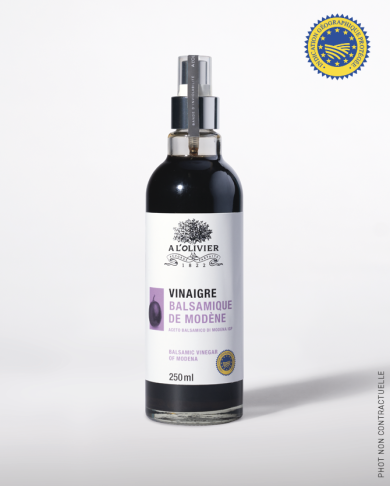INSPIRATIONS


Expert advice
| 12.08.2021
THE GOLDEN RULES FOR GREAT VINAIGRETTE DRESSINGS

Dressings are a great way to season green salads, raw vegetables, stews, cold meats and fish. All our tips and tricks for making the most of vinaigrettes, a deliciously versatile dressing!
The right ingredients
Technically speaking, a vinaigrette dressing is an emulsification of two main ingredients: oil and vinegar, usually seasoned with a pinch of salt and pepper.
When you think about how diverse each of these two products can be, it’s easy to see how the simple vinaigrette can be used in a wide range of recipes! “Fruity green” olive oil + balsamic vinegar of Modena, “fruity black” olive oil + infused white wine vinegar, toasted sesame seed oil or hazelnut oil + sherry vinegar, walnut or almond oil + raspberry vinegar, rapeseed oil + blackcurrant vinegar... The list of combinations is almost infinite, especially since vinegar—whether balsamic or fruit-infused—can be partially or completely replaced by other acidic ingredients such as lemon or grapefruit juice.
You can also add a variety of extra ingredients to suit your taste or a specific dish: shallots, garlic, herbs, spices, citrus zest, capers, chopped pickles, anchovies, soy sauce, hard boiled eggs, honey... And mustard? Mustard is often used to spice up French vinaigrettes and give them body, but its strong flavour doesn’t pair well with every dish. For this reason, it’s common, but not a go-to.
The right recipe
A good dressing recipe is about finding the right balance. Whatever dressing recipe you choose, make sure to dissolve the salt in the vinegar before gradually beating or whipping in the oil. The salt won’t dissolve in the oil. The same applies to mustard: make sure its thoroughly mixed with the vinegar before adding the oil.
Remember that a vinaigrette dressing is an emulsion, which is a mixture of two liquid substances that can’t normally be mixed together. To mix, they must be shaken together. You can mix your vinaigrettes with a fork, whisk, spiral whisk or with a blender. You can also combine the ingredients in a jar or bottle, secure the lid and shake vigorously!
The right ratio
A vinaigrette dressing typically uses three times as much oil as vinegar, for example 3 tablespoons of oil per 1 tablespoon of vinegar. Of course, you can adjust this ratio to suit your own tastes. You can also switch up the core ingredients (white or red wine vinegar is more acidic than balsamic, cider or sherry vinegar) as well as the flavours of the dish you plan to use your dressing on.
Vinaigrette dressing is an emulsion—and a fleeting one at that—since the oil and vinegar have the unfortunate tendency to repel each other. After a while, the oil will end up above the vinegar. To prevent the dressing splitting in this way, you can add mustard or egg yolks (as in mayonnaise). These ingredients improve the stability of the mixture as they contain surfactants that minimise the repulsion between oil and vinegar.
To turn this whirlwind romance into a lasting love story, some chefs recommend mixing a little warm water to the emulsified dressing (about 50 ml of water per 500 ml of dressing) using a hand blender.
How to store homemade dressings
Homemade dressings can be prepared in advance and stored in a cool place in a well-sealed jar or bottle. Simply shake the bottle just before serving to emulsify it again!

 Menu
Menu
 Mon compte
Mon compte  Wishlist
Wishlist  Panier
Panier 



